We’re happy to announce the release of a new feature for DNA Matches — the display of Shared Ancestral Places for every match. This feature makes MyHeritage’s DNA Matching even more useful.
Shared Ancestral Places refer to towns, countries, or U.S. states that appear in your family tree as well as in the family trees of your DNA Matches, where birth or death events of your ancestors (and those of your DNA Matches’ ancestors) took place. These places are identified going back up to 10 generations and can play a vital role in family history research.
When you review a DNA Match, it’s not always clear how the match is related to you and who your common ancestor may be. Up until now, you may have been able to figure out how your DNA Matches are related to you by looking at the family trees of your matches, the Shared Ancestral Surnames, or Smart Matches™ that exist between your trees. As of this week, if you and a DNA Match have a Shared Ancestral Place, you will be armed with more information to investigate the match further. You may be able to determine which common ancestor you and your match share from whom you both inherited the same DNA segments.
This new feature has added value whether you and your DNA Match have shared origins in a major city or in a small, remote village. For example, if you and a DNA Match both have ancestors who were born or died in the small town of Borșa, in Maramureș County, Romania, this may assure you that you and the match are indeed related, and will help you figure out where the connection comes from. Even if you and your match have ancestral events in a major city, the fact that you have that city in common already narrows down your search significantly, and can help provide additional clues as to how you might be related.
On MyHeritage, many DNA customers have robust family trees, allowing us to retrieve information such as ancestral places and compare them for DNA Matches.
We display ancestral events on a city level. For example, if we are able to determine that an event took place in Moscow, Russia, we place the pin there on the exact city on the map. In cases where we are unable to identify the city, we will group these events under the country.
Our advanced algorithms know to match cities and places even if they were misspelled or entered in different languages. If you entered Moscow, Russia in English into your family tree, and your match entered it in their tree as Москва, Россия, we will still match them up and identify this as a Shared Ancestral Place.
Accessing Shared Ancestral Places
On the DNA Matches page, where we list all of your DNA Matches, you will see Shared Ancestral Places for your matches, when they exist, which can help determine who your shared ancestors are.
Visit the DNA Matches page by clicking “DNA Matches” under the “DNA” menu.
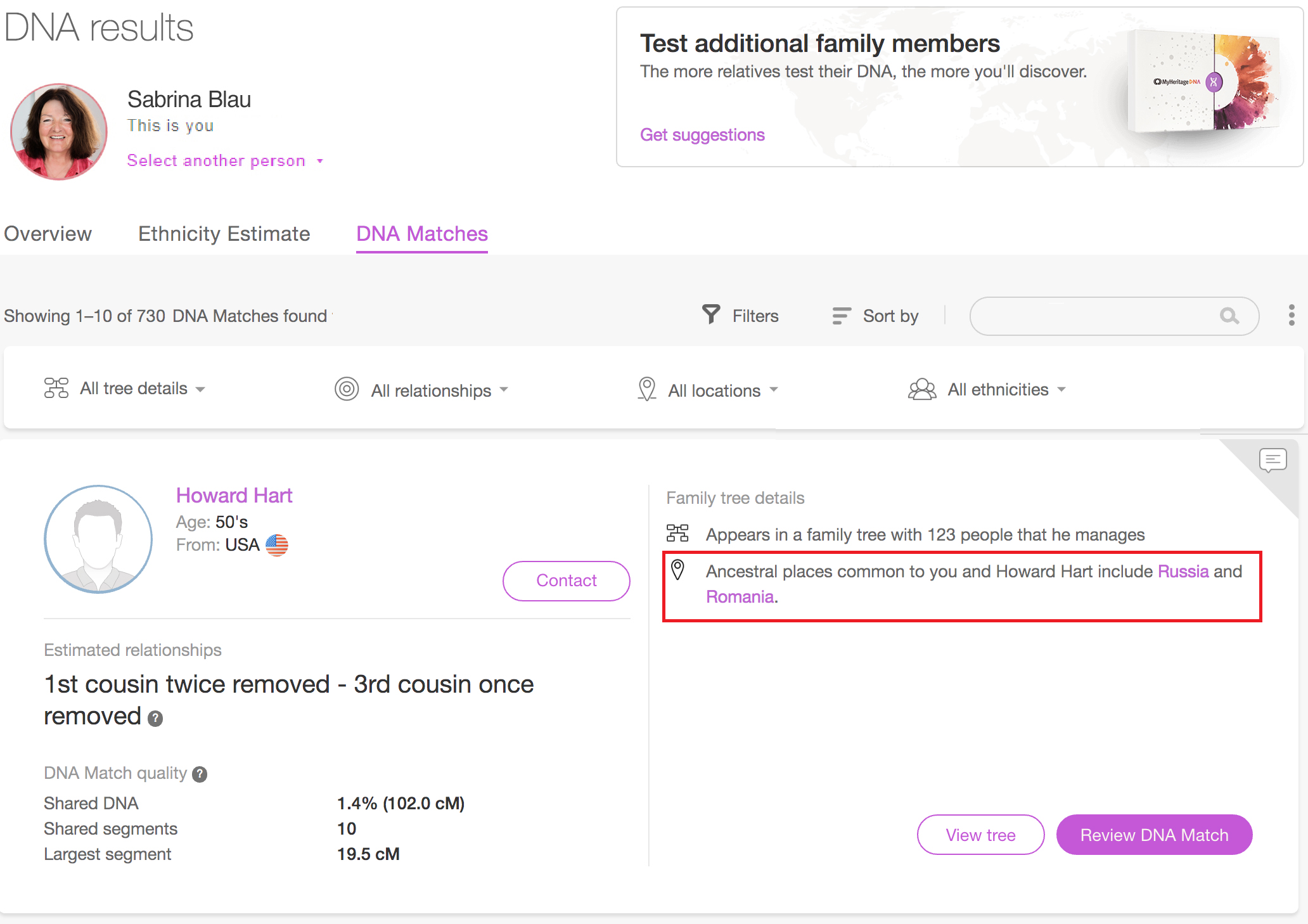
DNA Matches page (Click to zoom)
To view extended information about any of the common ancestral places, move the mouse over it. A tooltip will open with additional details. There you’ll see how many Shared Ancestral Places you have in common with this DNA Match.
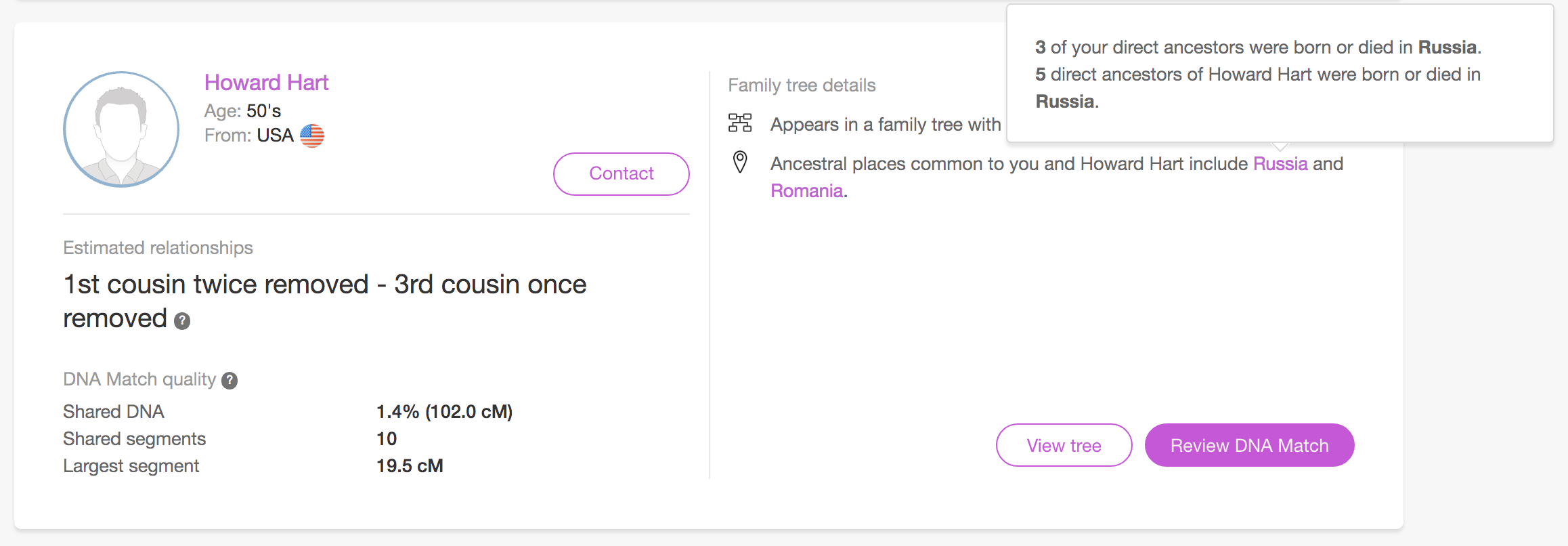
Tooltip showing extended information for Shared Ancestral Places (Click to zoom)
The DNA Match Review page offers a lot of detailed information about each of your DNA Matches, consolidated into one place with different sections that will help you discover how the match may be related to you. It now contains a new Shared Ancestral Places section, below the Shared Surnames section.
On the DNA Matches list, click the “Review DNA Match” button in the bottom right corner of any of your matches, as shown below, and scroll to the new section Shared Ancestral Places.
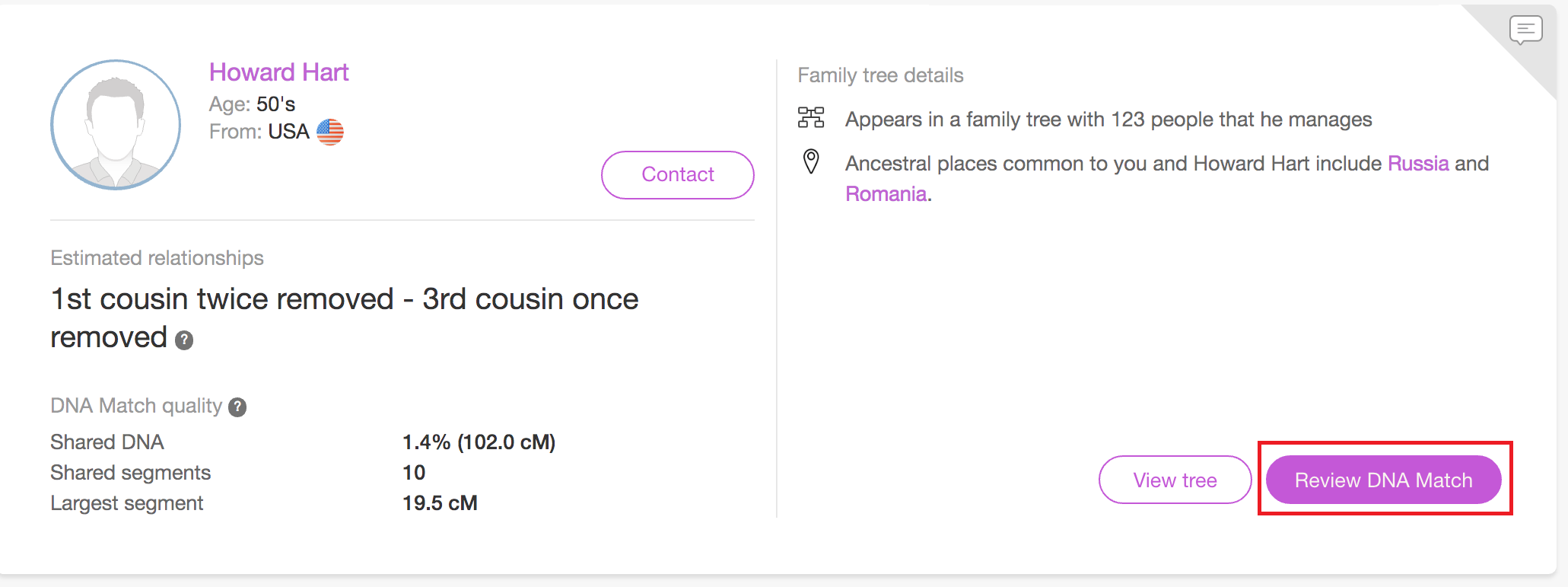
If you and a DNA Match have Shared Ancestral Places, this section will show the Ancestral Places you have in common — the places where life events occurred that appear in both your family trees, going back 10 generations. On the map, you’ll see pins indicating the cities in which the events took place and below the map, all events in that location from your family tree will be listed side by side with your match’s family tree events.

Shared Ancestral Places section (Click to zoom)
Light gray pins on the map portray events in your family tree, dark gray pins show events in the tree of your DNA Match, and purple pins are used to denote shared places where there are events in both trees that occurred in that specific place.
Moving the mouse over a person’s name who had a life event in that location will open a tooltip, from which you may view the person in the family tree, view their profile, or search records for that individual.

Select a country or U.S. state name from the list on the top left-hand side to explore all events that occurred in that specific place.
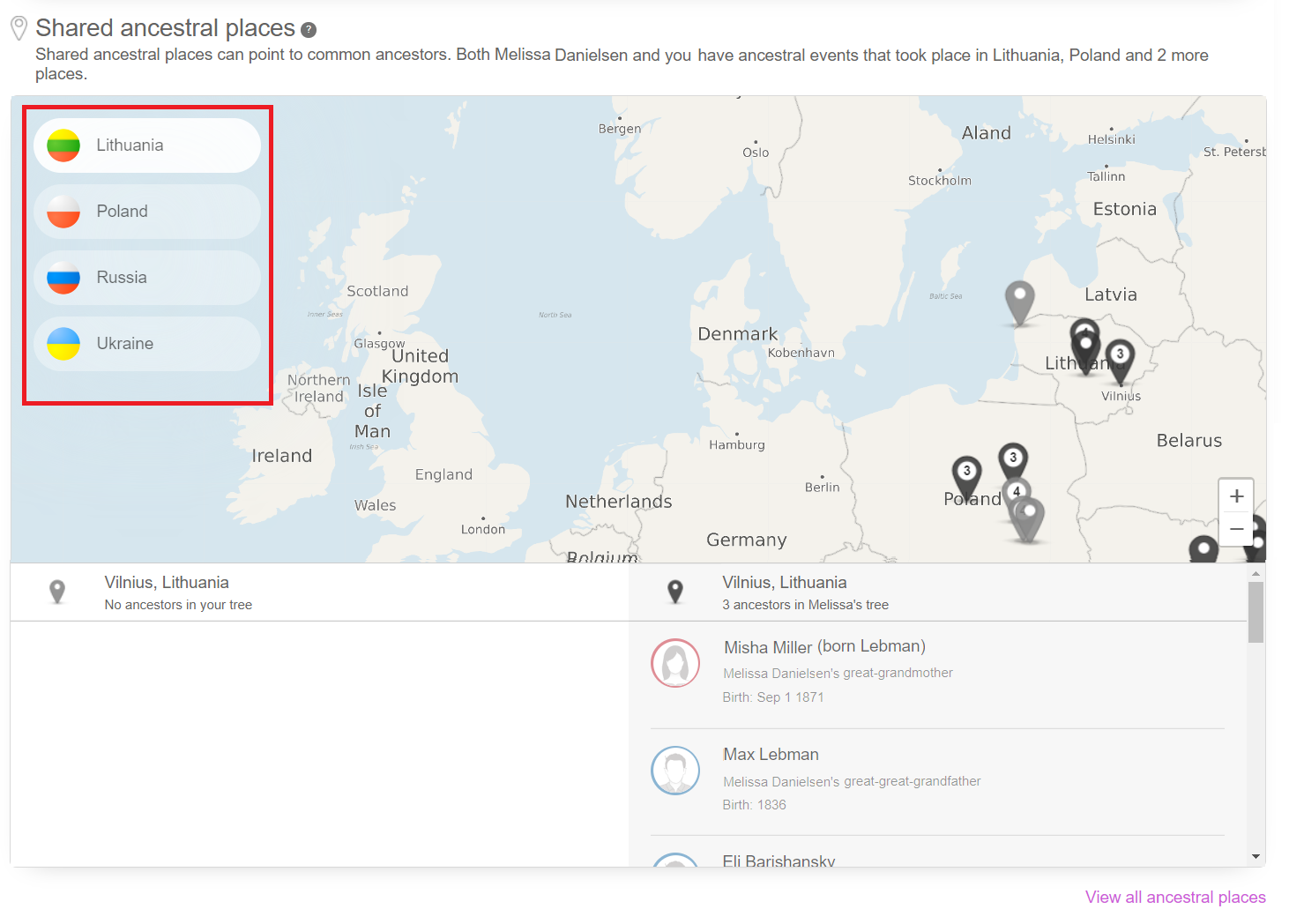
Selecting a country in the Shared Ancestral Places section (click to zoom)
Only events that occurred in a country or U.S. state that you and your DNA Match have in common will be shown on the map and in the list below it. To view all the ancestral places belonging to your DNA match, click on the button “View all ancestral places” in the bottom right corner of the section. This will open a popup with all the ancestral places you have in common. In brackets, we list the surnames that have events in these locations.

FIltering matches by shared places
We recently released a new and extensive filtering system for DNA Matches. For a reminder on how to manage all of your DNA Matches and make sense of them using our powerful filters, see our previous blog post.
Using the first entry on the Filter toolbar, which is Tree details, you can now filter your matches to see only those matches that have Shared Ancestral Places, in addition to the previous filtering options of matches that have a family tree, have a Shared Ancestral Surname with you, or Smart Matches™ that exist between your trees. Isolating the DNA Matches that have Shared Ancestral Places may allow you to figure out how they are related to you.
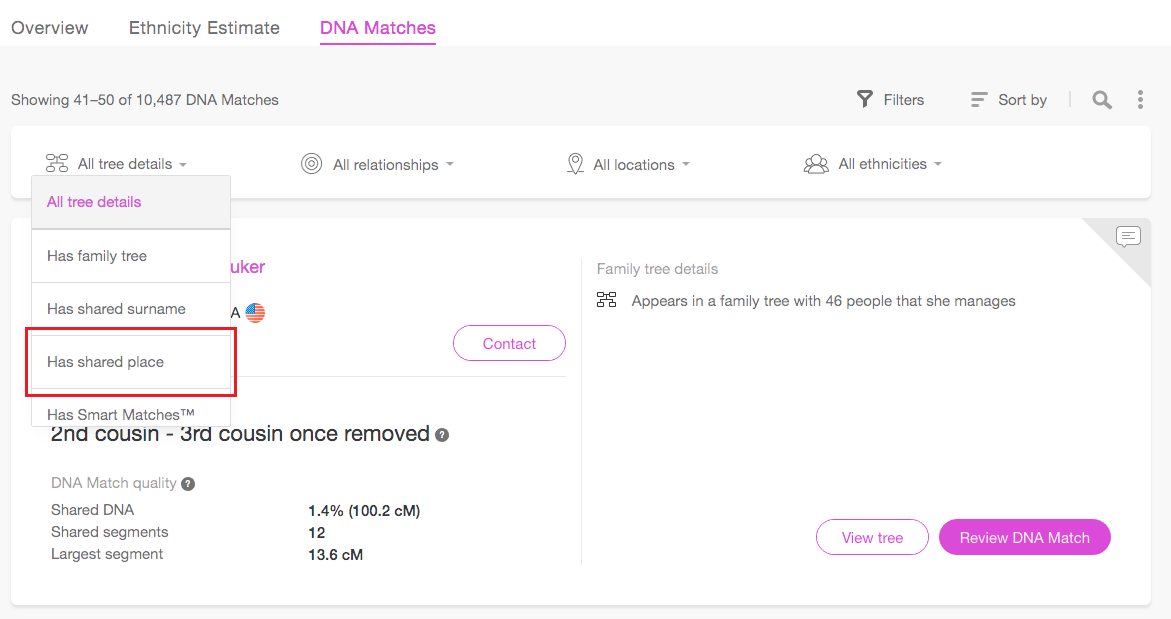
Filtering by Shared Ancestral Places (Click to zoom)
This filter can be combined with other multiple filters, to filter matches by additional criteria, and it can also be combined with sorting and search options. In this example, we have chosen to show only matches with a shared place, where the match comes from the U.S. and has North and West European ethnicity.
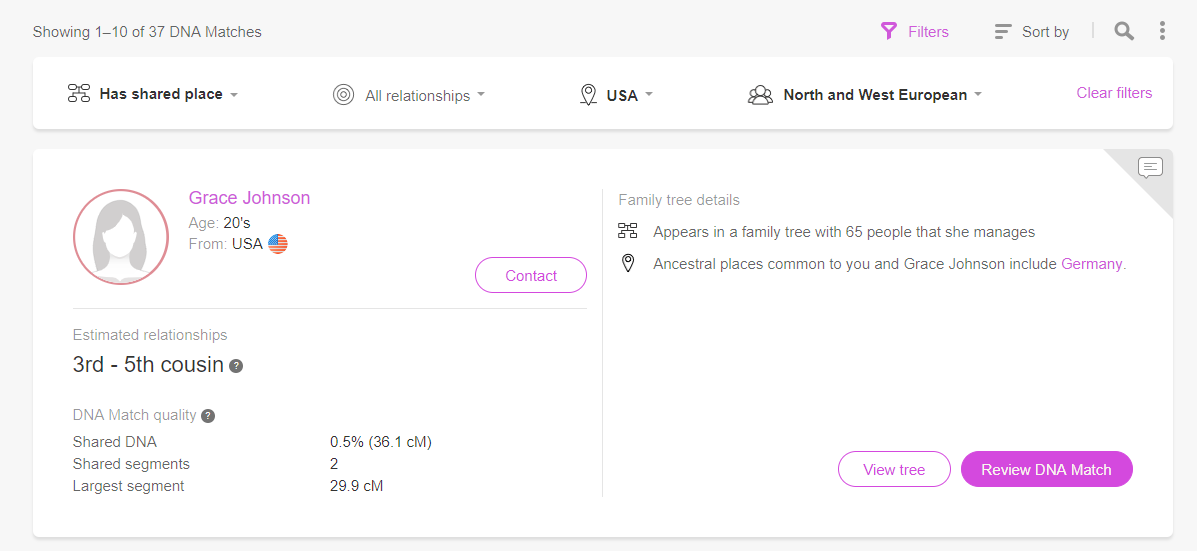
Combining filters (Click to zoom)
Cost
Some sections on the Review Match page, such as the new Shared Ancestral Places feature, require a family site subscription to view them in their entirety. Users with a Premium, PremiumPlus, or Complete subscription will have full access to all sections on the Review Match page, while Basic users will have a partial view of some advanced features. Learn more about our subscription plans here.
Conclusion
This new feature can provide you with a good starting point for further investigation into your DNA Matches. We hope that it will help make DNA Matching even more useful to you, allowing you to investigate new avenues that you may have left unturned in the past. We are always looking for ways to help you get the most of your DNA Matches, and make discoveries relating to your family’s history.
If you haven’t taken one yet, order a MyHeritage DNA kit today or upload your DNA data from another company for free. All DNA data that is uploaded now and prior to December 1, 2018, will continue to enjoy full access to all DNA features for free.
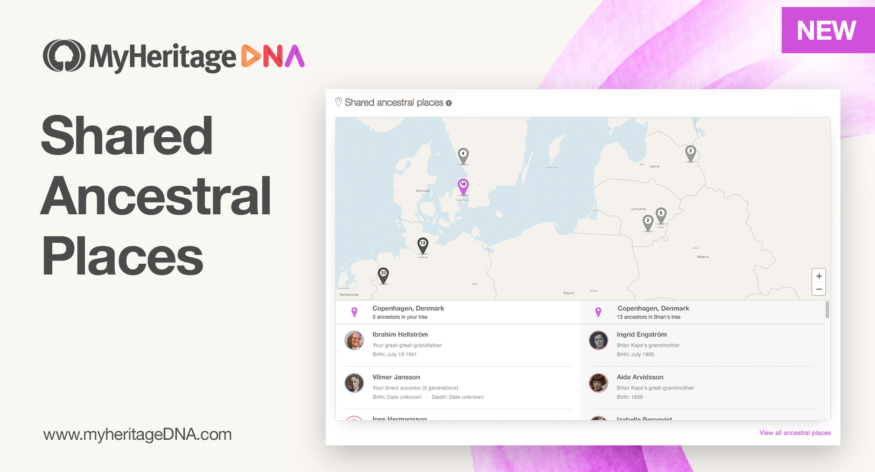














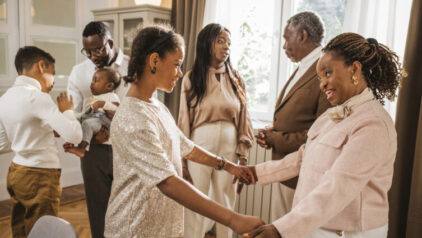
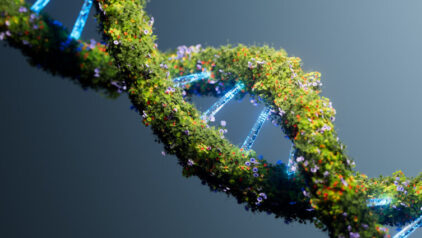

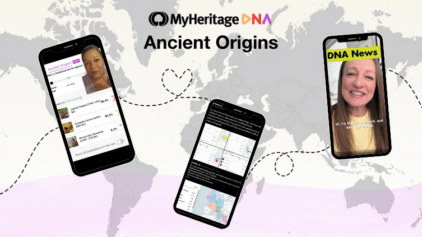
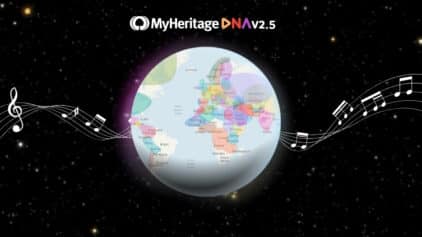
Jo-Anne Huesser. (Josephine Anne)
November 14, 2018
Hi, do I have to buy / purchase into being able to see my relatives on my heritage through my DNA. Pay extra for this?